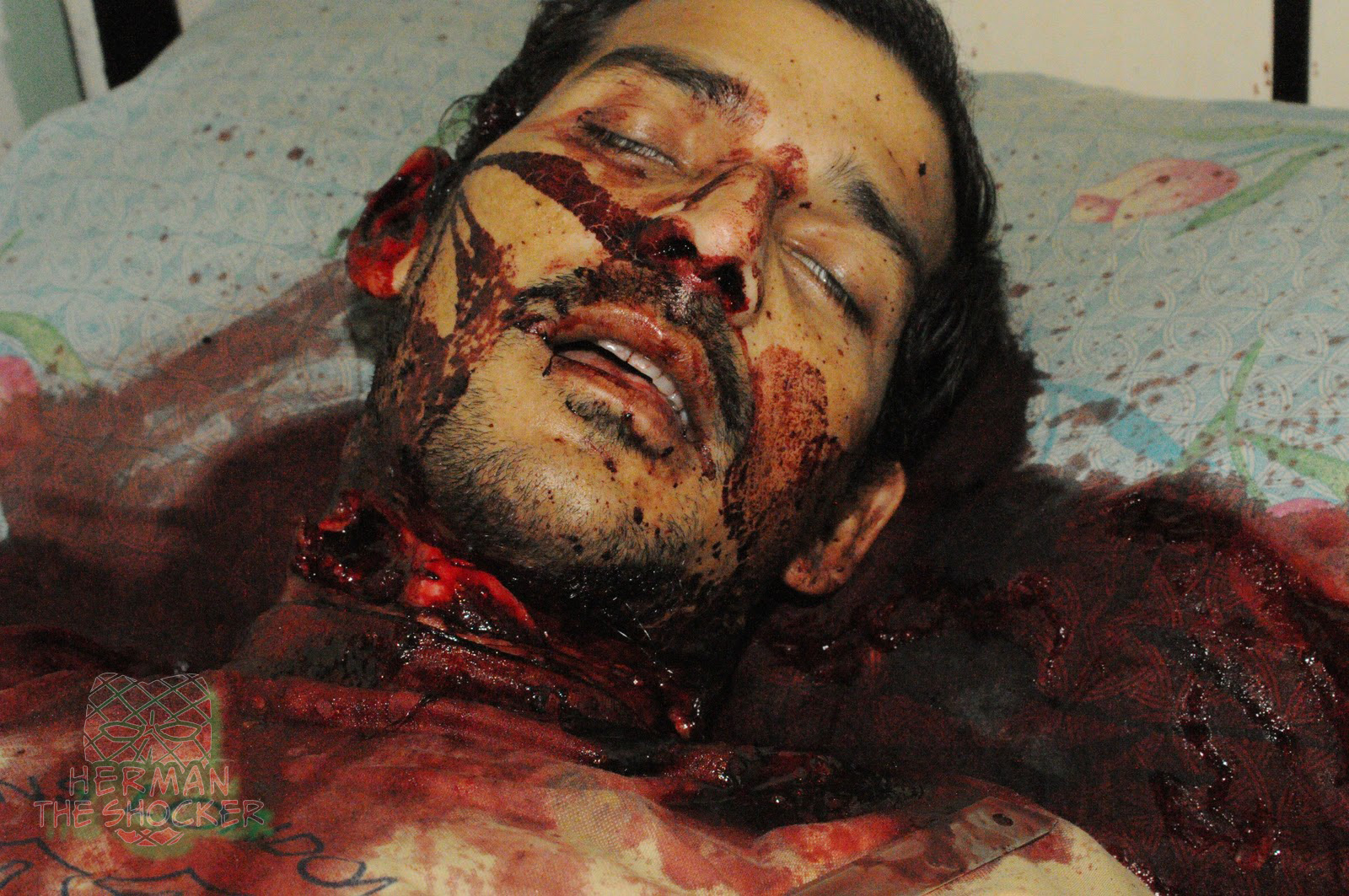This man committed suicide by cutting his throat while he was sitting on a bed opposite his own bed. Spurting down blood on his T-shirt and blood splatters on the bedside table. He completed the process in his own bed. A paper cutter blade was used. Hesitation marks were found. No further info.
Hesitation, or tentative, wounds are defined either as: any cut or wound that is self-inflicted after a decision is made not to commit suicide, or any tentative cut or wound that is made before the final cut that causes death. Such wounds are usually superficial, sharp, forced skin cuts found on the body of victims. These less severe cutting marks are often caused by attempts to build up courage before attempting the final, fatal wound.
Non-fatal, shallow hesitation wounds can also accompany the deeper, sometimes fatal incisions. Although hesitation cuts are not always present in cases of suicide, they are typical of suicidal injuries. However, the presence of hesitation marks alongside or near to the final fatal mark usually indicates a forensic diagnosis of suicide over other possible causes of death.
When an incised wound is longer than it is deep, it may be referred to as a ‘cut’ or ‘slash’, though a ‘cut’ may also be used by laypersons to describe a laceration. Such slashes when inflicted by knife, sword, razor, cleaver, parang, machete, panga, broken glass or bottle, are typical of a fight, when the assailant strikes out with a swiping action, rather than the thrust of a stabbing attack. They are common in gang fights and bar-room brawls. They are also seen in suicidal injuries, usually on the wrist or throat.
The characteristics of any given wound are a matter of chance and relative positions. The slash may be deeper at the entry end or the exit point, though it seems true that many such injuries tend to dig in near the point of first contact and become progressively more shallow as the wound approaches the distal end.
Latest posts










 US ☎︎ 988 or 1-800-273-TALK (8255)
US ☎︎ 988 or 1-800-273-TALK (8255) CA ☎︎ 1-833-456-4566
CA ☎︎ 1-833-456-4566 UK ☎︎ 0800-689-5652
UK ☎︎ 0800-689-5652 AUS ☎︎ 13-11-14 or 1300-659-467
AUS ☎︎ 13-11-14 or 1300-659-467 ROK ☎︎ 1393
ROK ☎︎ 1393 DE ☎︎ 0800-111-0-111
DE ☎︎ 0800-111-0-111 ES ☎︎ 024
ES ☎︎ 024




